Over the past twelve months we have reported changes to a number of conflict zones which have the potential to affect airspace risk, along with other security concerns.
With the arrival of 2023, here’s another look at these regions which have had the biggest impact on civil aviation safety.
Active conflict zones
We cover all the current conflict zones, with information on the context and details of current notams and warnings, on safeairspace.net
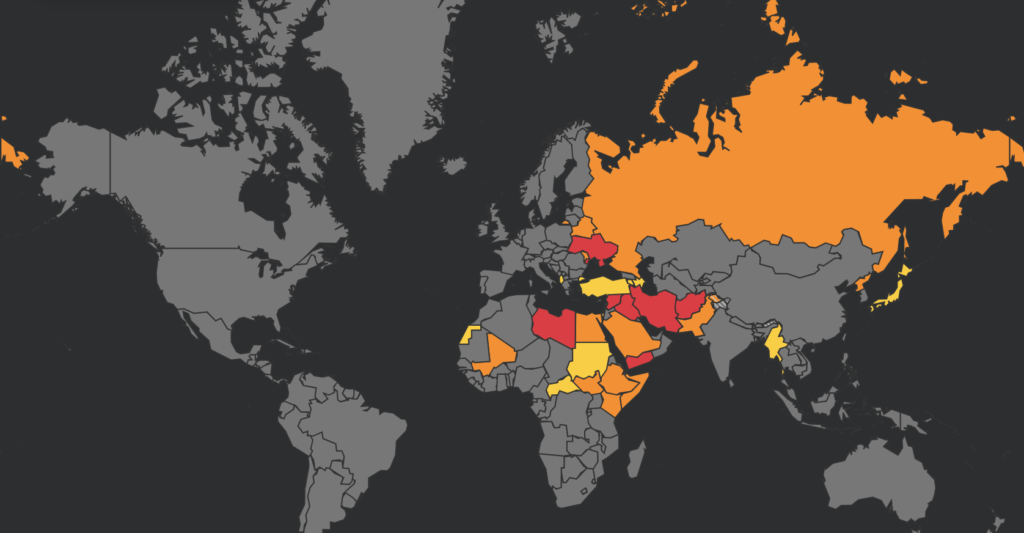
Current Safeairspace conflict and risk zones
There are a number of conflict zones which remain active, but which have seen little change to the situation or risk rating. The following mentions refer to those which have seen substantial change over the last year only.
Ukraine/Russia
The war has continued since February last year with significant impact on airspace in Europe. Ukrainian airspace remains closed at all levels due to ongoing and intensive military activity. Russia has also persisted with flight disruptions at ten airports in Southwestern Russia, and another in Russian-annexed Crimea.
They include:
- URKA/Anapa
- UUOB/Belgorod
- UUBP/Bryansk
- URWI/Elista
- URKG/Gelendzhik
- URKK/Krasnodar
- UUOK/Kursk Vostochny
- UUOL/Lipetsk
- URRP/Rostov-on-Don
- UUOO/Voronezh
- UKFF/Simferopol (Crimea)
Ukrainian airspace remains extremely dangerous due to military activity. Those risks have also been shown to spill over into open airspace that borders it. Special care needs to be taken when operating anywhere near the conflict zone.
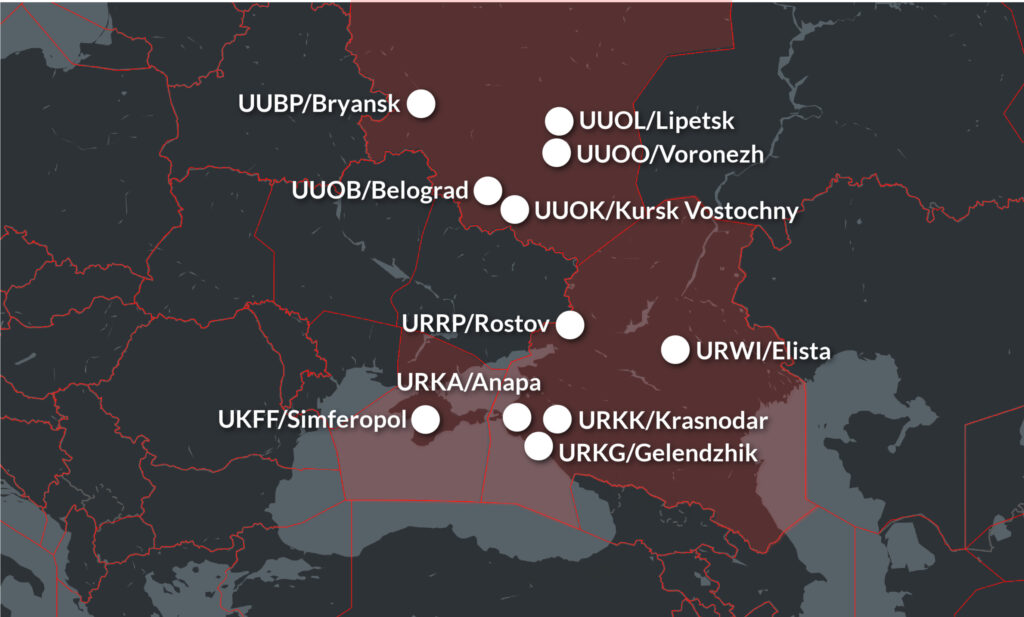
Russian airport restrictions.
Official Advice
Major authorities continue to recommend avoiding Russian airspace, and prohibit against operations in Ukrainian airspace. They also advise to use caution for operations within 200nm of the Ukrainian border.
On Jan 14, debris from a Russian rocket was found in Northeastern Moldova near the Ukrainian border. It is the third such report since October last year. Spill over risks from the war in Ukraine are a known threat to civil aircraft in the LUUU/Chisinau FIR, which is mostly off limits. AIP Sup 01/23 allows flights in and out of LUKK/Chisinau under certain conditions only.
Iran/Iraq
The end of 2022 saw an increase in activity between Iran and Iraq, with multiple rocket attacks reported in the ORER/Erbil region. In September, Iran closed a section of airspace in the north of the country along the border with Iraq, and is using the area to launch missile and drone attacks at targets near ORER/Erbil Airport. Iran is warning their own operators against flying in Iraqi airspace.
Ongoing political turmoil, militant activities, and military operations in Iraq poses an elevated risk to aviation and airspace safety. In recent months, militants have fired rockets in Baghdad’s Green Zone, causing flight disruptions at nearby ORBI/Baghdad airport; Iran continues to target northern Iraq with missile and drone attacks; and Turkey has been launching attacks along Iraq’s northern border.
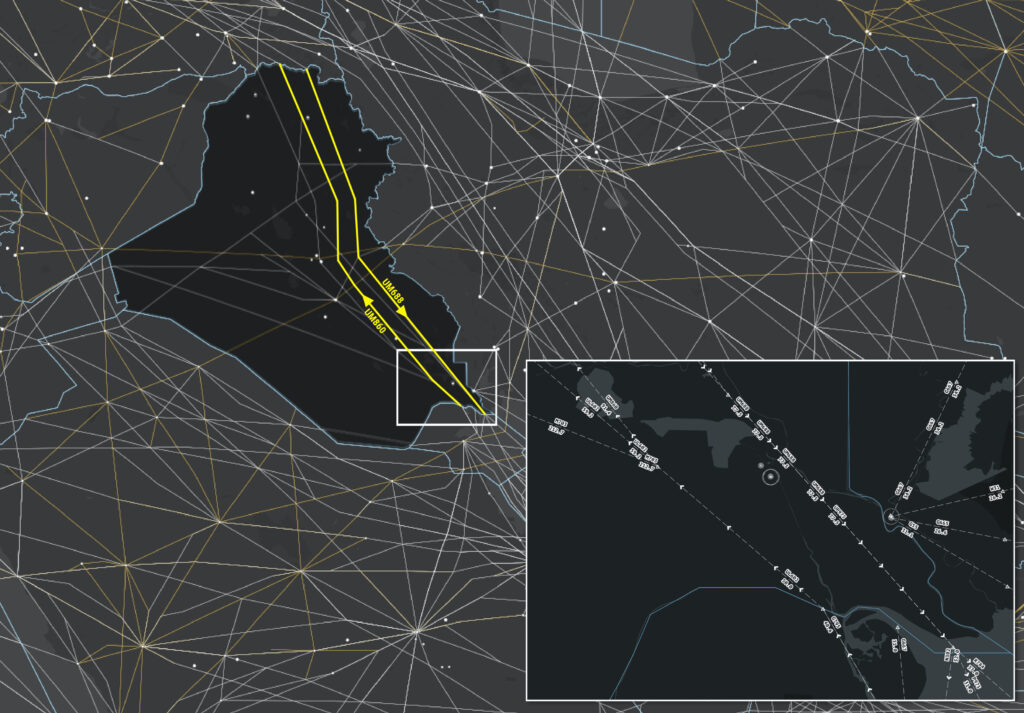
Iraqi airways close to border.
Official Advice
The airways in the vicinity of the border should be operated on with caution.
Towards the end of 2022, the US FAA extended their restrictions on Iran and Iraq by two years – US operators are prohibited from the ORBB/Baghdad FIR below FL320, and completely prohibited from OIIX/Tehran FIR. Other major authorities caution against operations below certain flight levels.
Potential Risk & Conflict Zones
North Korea
North Korea test fired an unprecedented number of missiles in 2022, all without prior notice. Things escalated late last year to coincide with South Korean military exercises. A large number of the missiles landed in the Sea of Japan, with one splashing down just 30nm off the coast of South Korea. Another overflew Japanese territory.
From December 26, there were further disruptions. Several North Korean drones flew across the demilitarised zone and entered the RKRR Incheon FIR, resulting in military jets being scrambled. Ops at RKSI/Seoul and RKSS/Gimpo were briefly suspended. We wrote about that here.
The South Korean president has gone public announcing that any further incidents could threaten a military pact between the two countries, which has potential to greatly increase overflight risk.
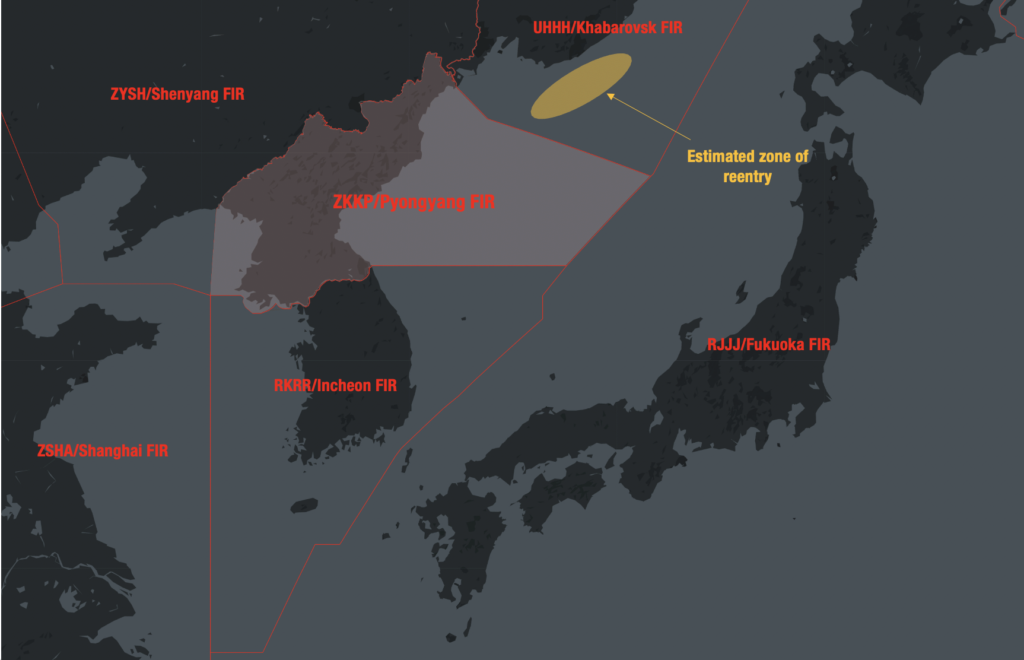
A suspected missile landed over 400nm from the North Korean coastline.
Official Advice
The US prohibits flights across all North Korean airspace, including the oceanic part of the ZKKP/Pyongyang FIR over the Sea of Japan. Several other countries have airspace warnings in place which advise caution due to the risk posed by unannounced rocket launches.
The primary risk remains from debris from missile re-entries striking aircraft overflying the oceanic part of the ZKKP/Pyongyang FIR over the Sea of Japan. However, the escalation in tensions between North and South Korea, and the incursions on the Japanese EEZ raise the caution level within both Japanese and South Korean airspace.
China/Taiwan
In mid-2022, the US reported an increase in what they consider ‘unsafe, unprofessional or non-standard intercepts’ by Chinese military aircraft in the South China Sea region. The China Sea Dispute is a growing concern.
China has also increased political pressure on Taiwan. Various military exercises by the Chinese took place throughout 2022. In August, China designated six areas of airspace as danger zones for a “military exercise,” effectively barricading the country’s airspace.
Official Advice
There are no reports of intercepts impacting civilian aircraft, but extra caution is advised because of a growing amount of military traffic active in the area.
Aircraft operating in Taiwan’s ADIZ need to pay close attention to proper procedures – effectively squawk a discrete code and remain in contact with ATC at all times.
Turkey
Turkey has seen an increase in spillover effects from Syrian and Iranian conflicts. Reports say shelling and rocket strikes have occurred near a town in southern Turkey, near the border with Syria. Turkey has been carrying out airstrikes on Syria and Kurdish regions of Iraq since an earlier attack on Istanbul. The escalation in airstrikes, and risk in southern Turkish airspace from Syrian insurgents poses an ongoing threat to civil aircraft.
Official Advice
More caution should be taken if operating in southern regions of Turkey, along the border with Syria. GPS jamming within border areas can be expected.
Civil Unrest and Crime
Economic pressures around the world over the past twelve months seem to have escalated instances of widespread civil unrest that have directly impacted aviation.
Peru is the latest. It has been experiencing political turmoil since late last year which led to protests and riots. Demonstrators blocked access to several airports. The situation is still developing.
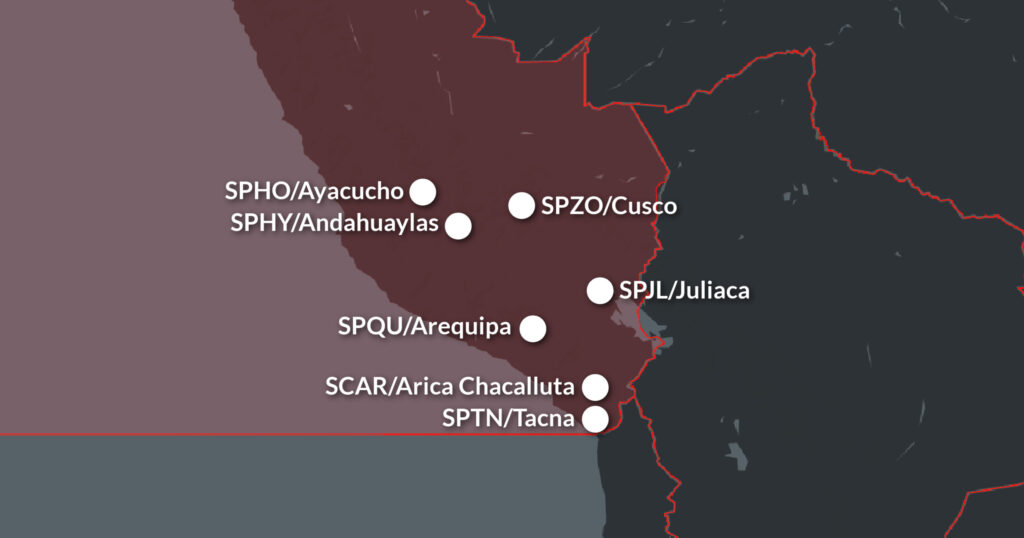
Airports previously closed due to civil unrest.
We also reported on similar issues in Sri Lanka when a state of emergency was declared back in July, 2022. Fortunately, in this case the situation was resolved.
Mexico has seen a rise in civil unrest since the start of January 2023, in response to the arrest of a primary member of a cartel. The unrest has been limited to the Sinoloa region, but has seen three airports impacted significantly.
Bouts of civil unrest can occur without warning and have potential to close down airports, and put crew on the ground at risk. The US Department of State is our best source of travel advisories and warnings. For operations to less developed countries in particular, it is important to monitor the political and security situation before visiting unfamiliar spots (and if you have, please share with us at team@ops.group or via Airport Spy).
2022 also saw a notable number of less common security issues, including bomb threats, the use of fake airline IDs and even imprisonment of crew without charge. A keyword search on your Member’s Dashboard will help you find more information on all these things.
More on the topic:
- More: Haiti Crisis: Airport Attacked, Aircraft Shot
- More: Airspace Risk Update – Important Changes You May Have Missed
- More: Get ready for more North Korean missiles
- More: Ukraine-Russia Spillover Risks: Nov 2022
- More: North Korea Missile Threat
More reading:
- Latest: Teterboro: RIP the RUUDY SIX
- Latest: 400% increase in GPS Spoofing; Workgroup established
- Latest: GPS Spoofing WorkGroup 2024
- Safe Airspace: Risk Database
- Weekly Ops Bulletin: Subscribe
- Membership plans: Why join OPSGROUP?



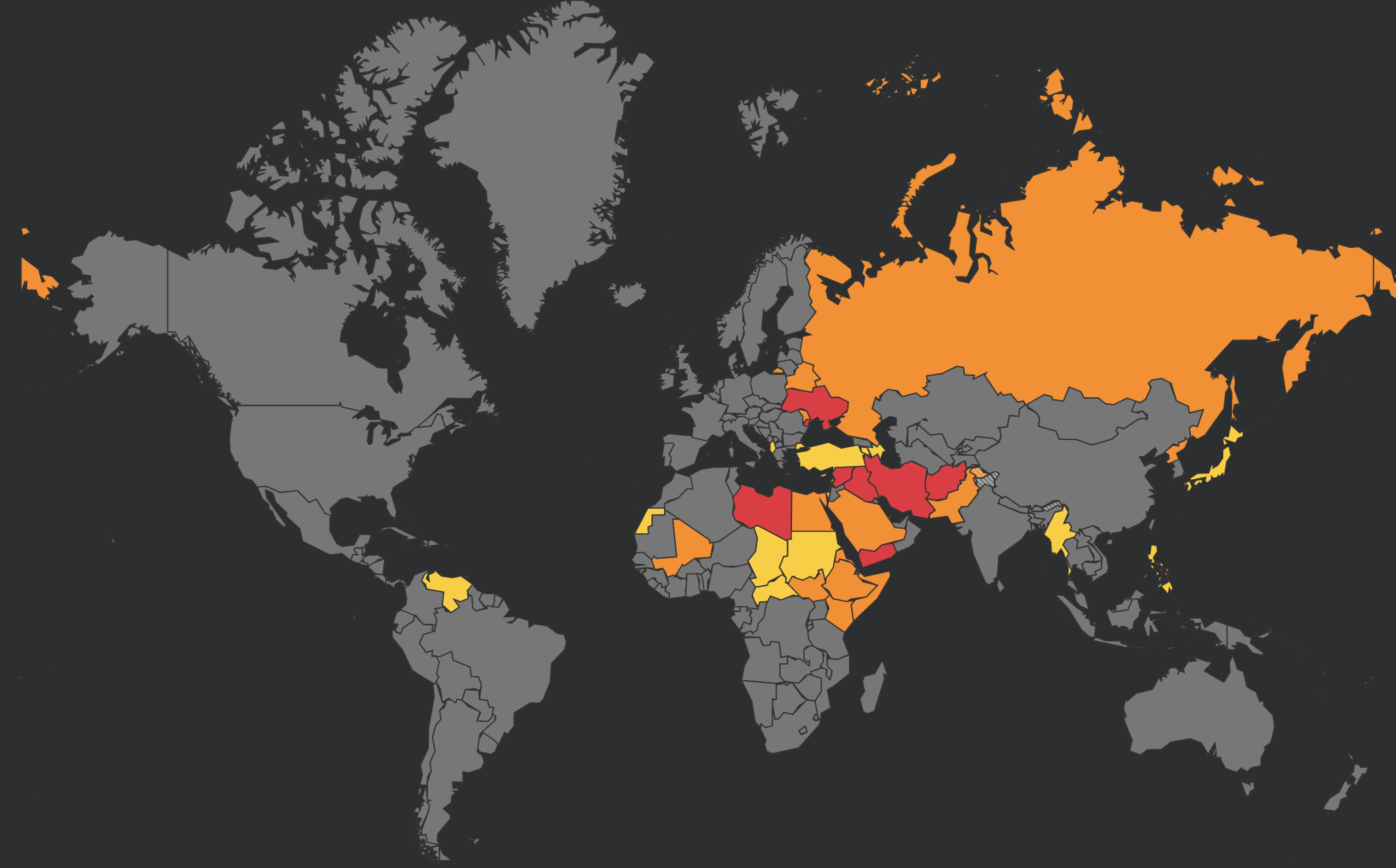







 Get the famous weekly
Get the famous weekly 






So much good information